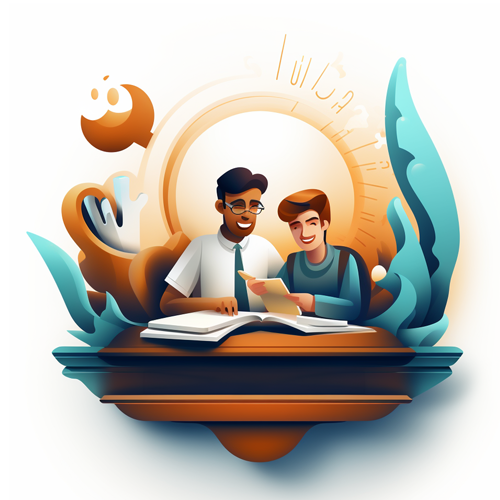Opportunities with Generative AI
Productivity and Efficiency
 Generative AI tools, like ChatGPT, can streamline repetitive tasks, allowing faculty and students to focus their energy on more strategic and creative endeavors. From drafting emails to summarizing articles, these tools can help optimize workflow efficiency.
Generative AI tools, like ChatGPT, can streamline repetitive tasks, allowing faculty and students to focus their energy on more strategic and creative endeavors. From drafting emails to summarizing articles, these tools can help optimize workflow efficiency.
In Praise of Boring AI (Article)
In an article from his One Useful Thing Substack blog, professor Ethan Mollick from the University of Pennsylvania cites research on how ChatGPT significantly improved the quality of business writing tasks and decreased the time it took to complete them. He also shares a few ways that he’s used AI tools to automate some of his teaching tasks.
Stimulate Thinking/Brainstorming
 Generative AI can act as a catalyst for creativity. Users can utilize AI tools to spark fresh ideas for projects and papers. Additionally, these tools are adept at generating counter arguments and fostering dynamic discussions that can enhance classroom interactions.
Generative AI can act as a catalyst for creativity. Users can utilize AI tools to spark fresh ideas for projects and papers. Additionally, these tools are adept at generating counter arguments and fostering dynamic discussions that can enhance classroom interactions.
Support Writing and Editing
 Can be leveraged to refine writing, aiding in the expression of ideas and concepts. By providing suggestions for clarity, coherence, and precision
Can be leveraged to refine writing, aiding in the expression of ideas and concepts. By providing suggestions for clarity, coherence, and precision
Accessibility
 AI tools contribute to a more inclusive learning environment. They offer guidance and support that cater to diverse learning styles, benefiting students with varying needs, including those within the neurodiverse spectrum.
AI tools contribute to a more inclusive learning environment. They offer guidance and support that cater to diverse learning styles, benefiting students with varying needs, including those within the neurodiverse spectrum.
Tutoring
 AI-powered chat bots, such as ChatGPT, offer personalized support akin to educational tutors. These tools adapt to individual learning paces, providing explanations and guidance that align with each student’s unique requirements.
AI-powered chat bots, such as ChatGPT, offer personalized support akin to educational tutors. These tools adapt to individual learning paces, providing explanations and guidance that align with each student’s unique requirements.
Deeper, Richer Learning
 Automation of certain assessment and learning tasks may provide more time for learning activity focused on inquiry, critical thinking, and problem solving.
Automation of certain assessment and learning tasks may provide more time for learning activity focused on inquiry, critical thinking, and problem solving.
Authentic Assessment
 As AI tools become commonplace, what was once considered acceptable evidence of learning (e.g. tests, written essays) may need to change. Assignments may change to be more personalized, collaborative, self-reflective, and reflective of the real world.
As AI tools become commonplace, what was once considered acceptable evidence of learning (e.g. tests, written essays) may need to change. Assignments may change to be more personalized, collaborative, self-reflective, and reflective of the real world.
As educators, embracing generative AI tools offers the potential to enhance teaching approaches, elevate student engagement, and foster an environment of inclusivity and innovation. Exploring these tools in the context of your teaching philosophy can open up new horizons for effective pedagogy.